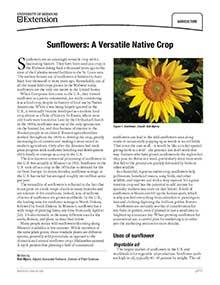

Sunflowers: A Versatile Native Crop
New
Sunflowers are an amazingly versatile crop with a fascinating history. Visit our site to view our Sunflowers: A Versatile Native Crop article.
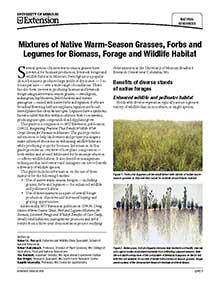
Establishing Mixtures of Native Warm-Season Grasses and Forbs for Potential Biomass, Forage and Wildlife Habitat
New
Establishing native warm-season grass, forb, and legume mixtures enhances biomass production, livestock forage, and wildlife habitat in Missouri.
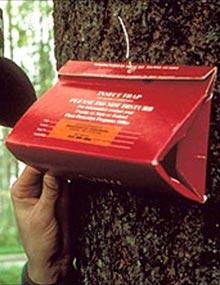
Tree Pests: Gypsy Moth - Page 3
New
Where gypsy moth has been found
Every year, more than 6,000 gypsy moth traps
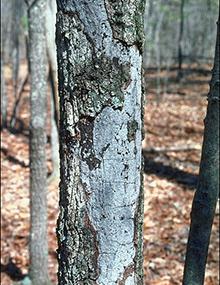
Tree Pests: Native Pests
New
There are many harmful native insects and diseases. We cannot eradicate them from our ecosystems, but we need to know how to control them to limit their damage.
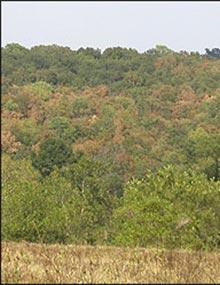
Tree Pests: Native Pests - Page 4
New
Oak decline
Trees are weakened by environmental stresses such as drought, waterlogging, frost or by pests such as defoliating or sucking insects. Weakened trees are then invaded and killed by insects and diseases that cannot successfully attack healthy trees. Usually the progression of decline is slow, and it occurs over several years.
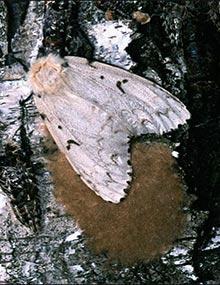
Tree Pests: Gypsy Moth
New
Gypsy moth is a destructive, exotic forest pest found throughout the northeast and parts of the upper Midwest. Learn how to identify it and slow the spread.
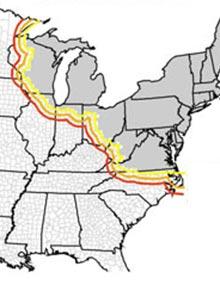
Tree Pests: Gypsy Moth - Page 4
New
Slow the spread of gypsy moth
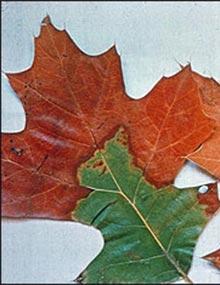
Tree Pests: Native Pests - Page 2
New
Oak wilt
Oak wilt is a lethal disease of oaks, especially species in the red oak group. A fungus invades the tree, which causes it to die. In Missouri, the oak wilt fungus is spread primarily when sap-feeding beetles carry oak wilt spores to fresh wounds during the early part of the growing season.
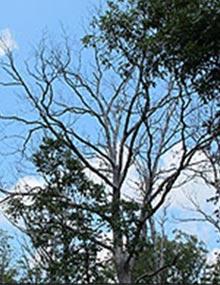
Tree Pests: Native Pests - Page 5
New
Rapid white oak mortality
Beginning in August 2011 and continuing through fall 2013, the Missouri Department of Conservation’s Forest Health staff received many reports of rapid white oak decline and mortality, often occurring within one growing season. In 2013, a majority of reports came from east central and southeast Missouri.
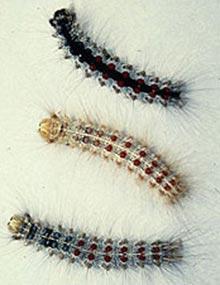
Tree Pests: Gypsy Moth - Page 2
New
Gypsy moths signs and symptoms
Adults vary by sex.

Tree Pests: Gypsy Moth - Page 5
New
Before you report a possible gypsy moth find
Many native, less damaging moths that look similar to gypsy moths, are present in Missouri and do not need to be reported. Consult the gypsy moth signs and symptoms page before reporting. Early detection is useful only when the problem is contained and eradicated.
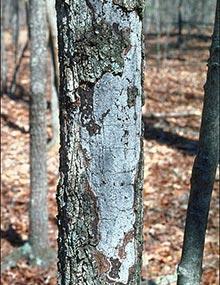
Tree Pests: Native Pests - Page 3
New
Hypoxylon canker
Hypoxylon canker is a common disease of hardwoods, especially species in the red oak group. It is often one of several factors ultimately responsible for tree death. A disease of the inner bark and sapwood, Hypoxylon damages tissues used by the tree to conduct water from soil to the leaves.
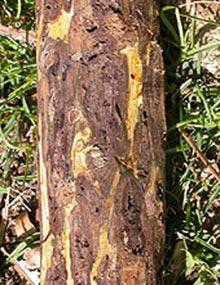
Tree Pests: Thousand Cankers Disease - Page 8
New
Now is the time to look for TCD symptoms
Although not detected in Missouri, TCD could easily get here on infested walnut wood used for woodworking or firewood from western or eastern states where TCD has been confirmed. Late July and early August is the best time to watch for possible symptoms of TCD.
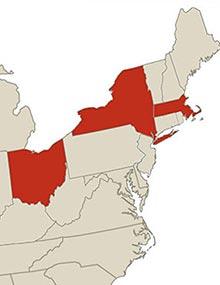
Tree Pests: Asian Longhorned Beetle - Page 3
New
Where ALB has been found
As of May 2014, there are active ALB infestations in Massachusetts, New York and Ohio. There are no known populations in Missouri.
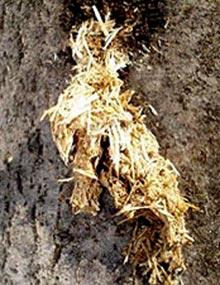
Tree Pests: Asian Longhorned Beetle - Page 6
New
Before you report a possible ALB find
Many native, less serious borers attack hardwood trees and do not need to be reported. Consult the ALB signs and symptoms. Early detection of ALB infestations and rapid treatment response are critical to successful eradication of this beetle.
If you find a suspect beetle in Missouri:

Tree Pests: Thousand Cankers Disease - Page 2
New
Learn to identify and manage Thousand Cankers Disease affecting walnut trees, including symptoms, signs, and disease progression.

Tree Pests: Thousand Cankers Disease - Page 3
New
Where TCD has been found
Thousand cankers disease occurs in nine western and five eastern states (shaded pink); the year in which the disease was confirmed is noted. Since 2010, TCD has been confirmed in Ohio, North Carolina, Pennsylvania, Tennessee and Virginia.

Tree Pests: Thousand Cankers Disease - Page 6
New
Slow the spread of TCD
You can help minimize the chances of spreading TCD by following these steps:
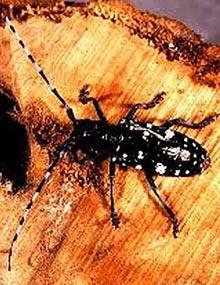
Tree Pests: Asian Longhorned Beetle
New
The invasive Asian longhorned beetle can destroy millions of acres of hardwoods. Learn how to stop the spread and why it is vital to keep it out of Missouri.

Tree Pests: Asian Longhorned Beetle - Page 4
New
ALB quarantine information
Currently, there are no interior or exterior ALB quarantines for the state of Missouri.
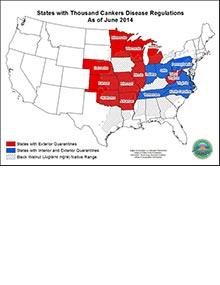
Tree Pests: Thousand Cankers Disease - Page 4
New
TCD quarantine information
TCD is not federally regulated, but be aware that individual states have enacted state-level or county-level quarantines restricting the movement of untreated walnut materials of all kinds.
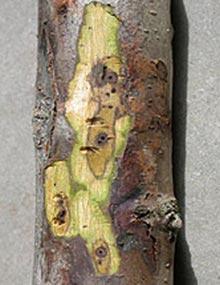
Tree Pests: Thousand Cankers Disease - Page 7
New
Before you report a possible TCD find
To determine if you should report TCD, ask yourself these questions:
Is my tree a walnut tree?
Determine if your tree is a walnut. If the answer to this question is yes, move to the next question.
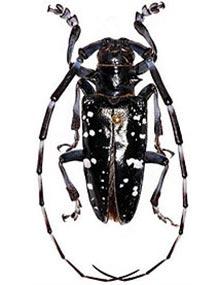
Tree Pests: Asian Longhorned Beetle - Page 2
New
ALB signs and symptoms Signs
Adult Asian longhorned beetles (Anopl

Tree Pests: Asian Longhorned Beetle - Page 5
New
Slow the spread of ALB
We must remain vigilant so we can eradicate any infestations should they occur. Transporting firewood or other wood materials from an infested area can spread ALB. So, the same common sense practices for slowing the spread of emerald ash borer and thousand cankers disease apply to ALB, namely:
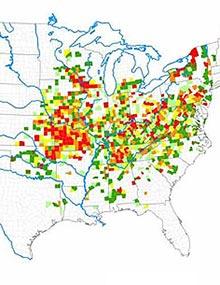
Tree Pests: Thousand Cankers Disease
New
Thousand cankers disease is a disease of black walnut, caused by the walnut twig beetle and a fungus. Learn about signs and management to help slow the spread.